I am done griping about the weather and I hope we have turned the spring corner so I am choosing to focus on the plentiful daffodils blooming all around us in Central Ohio. No matter where you drive there are all these unexpected and often random clumps of daffodils blooming. On the rural roads they mark where old farmhouses used to stand and in urban areas they are exploding out dreary gardens, around mailboxes or in the middle of yards. At our home we have thousands blooming that are remains of a previous home on the property that have naturalized over the years, lasting long after the original house. This hardy and determined trait of daffodils make them the perfect bulb to add to any garden, along with the fact they are the most cheerful signal that winter is ending.
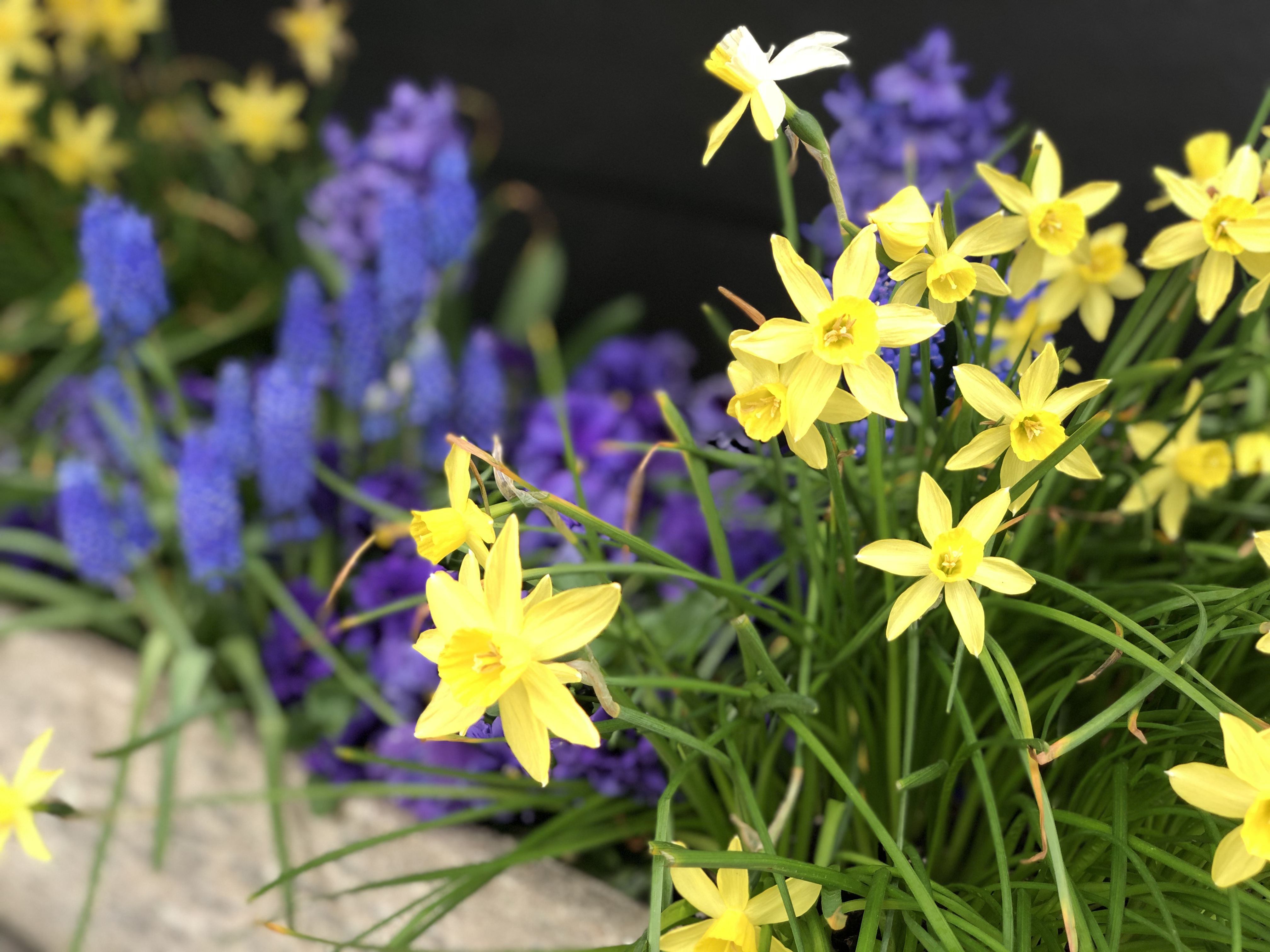
Here are some ways you can add daffodils to your garden, no matter the size. Useful for information for planting, selecting etc is scattered throughout the different size gardens, so read them all no matter your garden size.
SMALL GARDENS: For folks with terraces, condos and small outdoor spaces. Even those just want a smaller dose of daffodils.
If you have space to place a 2 foot wide container outside your door, you can have spring daffodils. You can plant only daffodils or mix with other spring bulbs or annuals. Since you plant daffodils in the fall you have three options for containers.
(1) Plant bulbs directly into the container you want the blooming flowers. Plant in the fall and leave the container outdoors through the winter on a protected side of the home or garden. This works best when planting with other spring bulbs or planting a single variety in a container. *Chicken wire on the top of the container can help keep out the pesky rodents looking for a winter snack.
(2) Plant bulbs in one gallon nursery containers, store outdoors through the winter and transplant in the spring into your container. I like this method since it gives me flexibility to add pansies or other annuals into the container. Also you can use the same container you had filled with winter greens by refreshing the soil and transplanting the bulbs. I did this method (mentioned here) and label the containers we successfully translated using this method in the post.
(3) Buying forced bulbs from the nursery. This works much like option 2, but you most likely get the standard yellow on yellow varieties and miss out on the fun of ordering some of the more unique doubles or striking color combos.
After the bulbs have bloomed and start dying back you have two options, toss the bulbs (treat as annuals) or plant in your yard or offer up to a friend with a garden to plant the bulbs. We transplant our container bulbs every year into our wood line to continue our existing plantings and have great success of them coming back the following years. *Be sure to leave the foliage up throughout the spring to allow the bulb to gather the energy needed for the next spring’s bloom. This is roughly 6 weeks or until the foliage dries and can be pulled by hand.
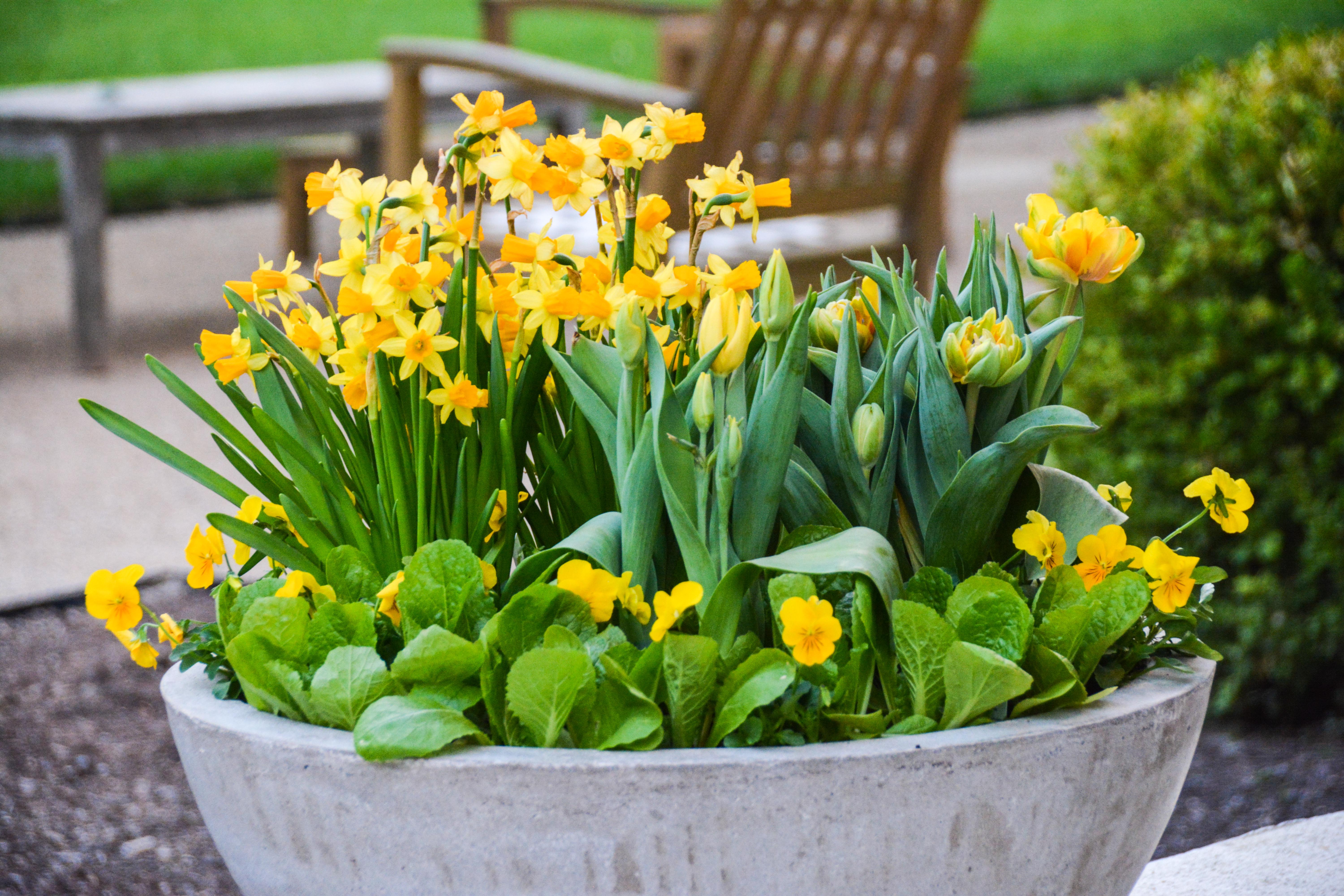
This container features Narcissus Cyclamineus tete tete mixed with yellow tulips and violas in a bed of lettuce. After the daffodils passed their seasonal prime, we transplanted along the driveway where they re-bloomed this year. The lettuce we continued in the pot and added some summer annuals in the place the the bulbs and pansies.
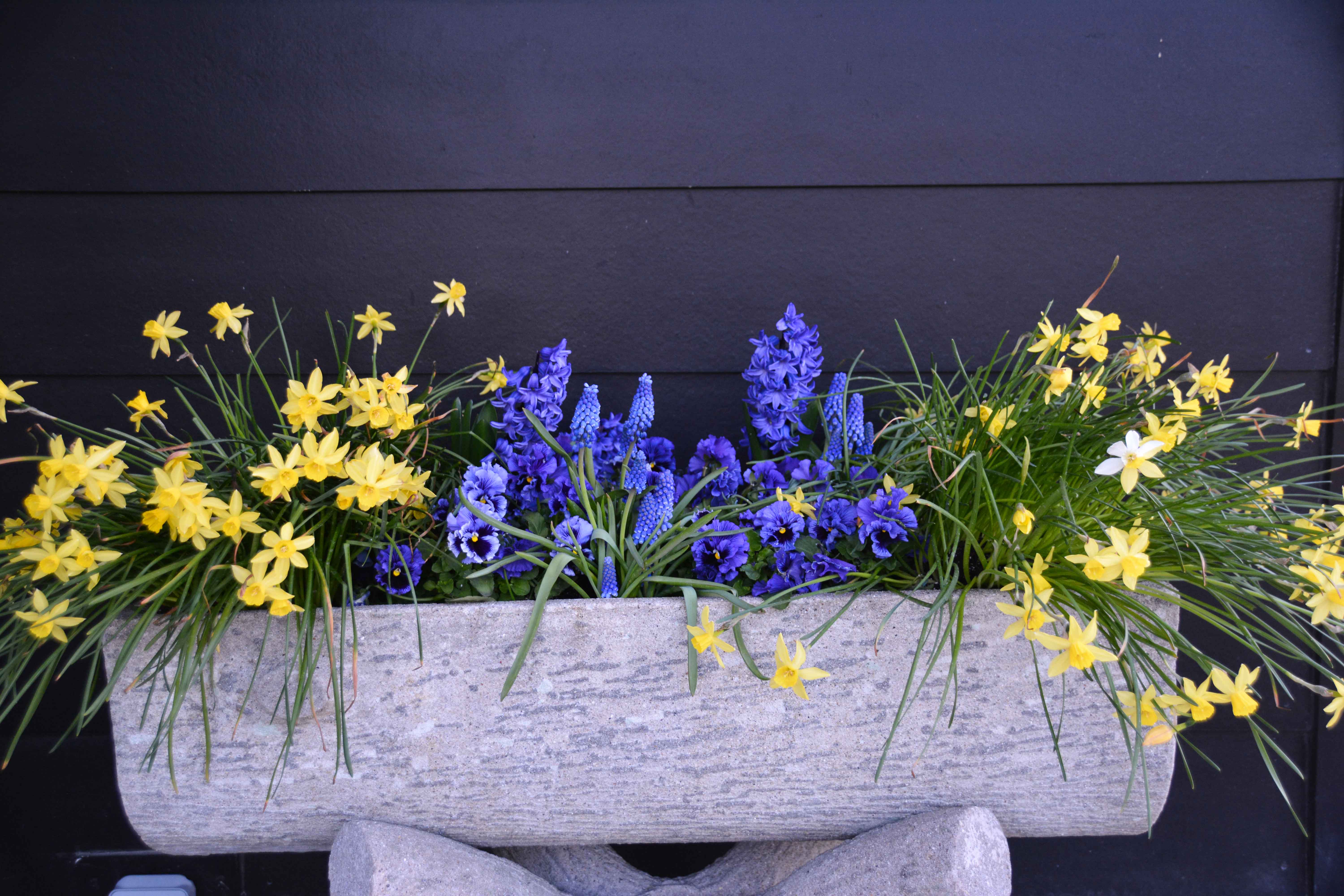
This container features Narcissus ‘Lemon Sailboat’ planted on the ends of the faux bois planter. The center is filled with a mix of Hyacinth Blue Jacket, Muscari Armenicum and Viola ‘Frizzle Sizzle Blue’. The fragrance when you walk past this container is intoxicating.
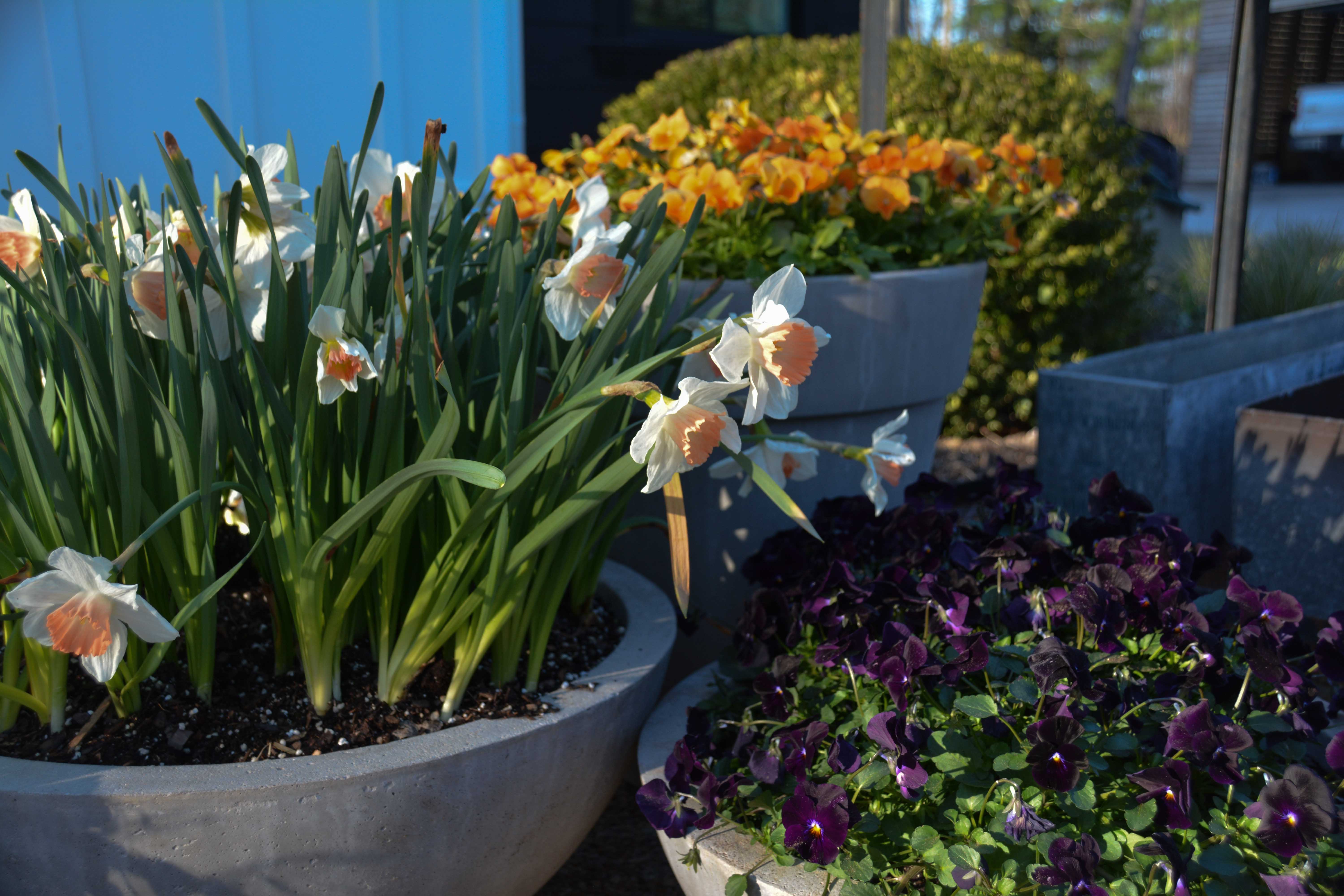
This is the easiest container design that anyone can accomplish. Here are three similar container finishes in different heights and sizes planted with daffodils and Pansies. Pansy plants are fairly inexpensive so, here two of the containers are filled with contrasting orange and purple pansies. The more expensive Narcissus ‘Pink Pride’ is planted in the largest container. After this bloom is complete, we have two additional containers filled with later blooming bulbs. One is filled with Narcissus Delnashaugh and the other with Narcissus La-Torch. The mono-pot design allows us to swap out the container ofbulbs, while the pansies will flourish during the whole period and will work with all three daffodil colors.
LARGE GARDENS: You have a large yard with nooks and crannies, woodlands or open spaces you dedicate to large drifts of blooms.
If you have the space, embrace the impact of large daffodil drifts softening edges in your garden. Places to look for a large drift include the following:
- In wooded areas, along the edge of the woodline.
- Under trees, even ones that are difficult to grow grass
- Under fences, around mailboxes or large rocks in the garden, fill in the nooks and crannies.
The idea is to plant in natural unplanned area to allow the naturalization and drifting of the daffodils to feel as natural as possible. Also to feed the bulb for the next year you need to allow the foliage to die back naturally. Planting in places with more under growth will hide the foliage and reduce the desire to cut back the browning foliage. When planting group 10-20 bulbs together in one large hole and continue to add on over the years and plant with a mix of varieties from early, mid to late blooms. However stick to varieties in a similar color palate in an area to provide some cohesion to the naturalistic waves. If you are lucky enough to be able to plant a few large drifts (at least 100 bulbs), you also will have the least guilt in cutting some blooms to bring indoors.
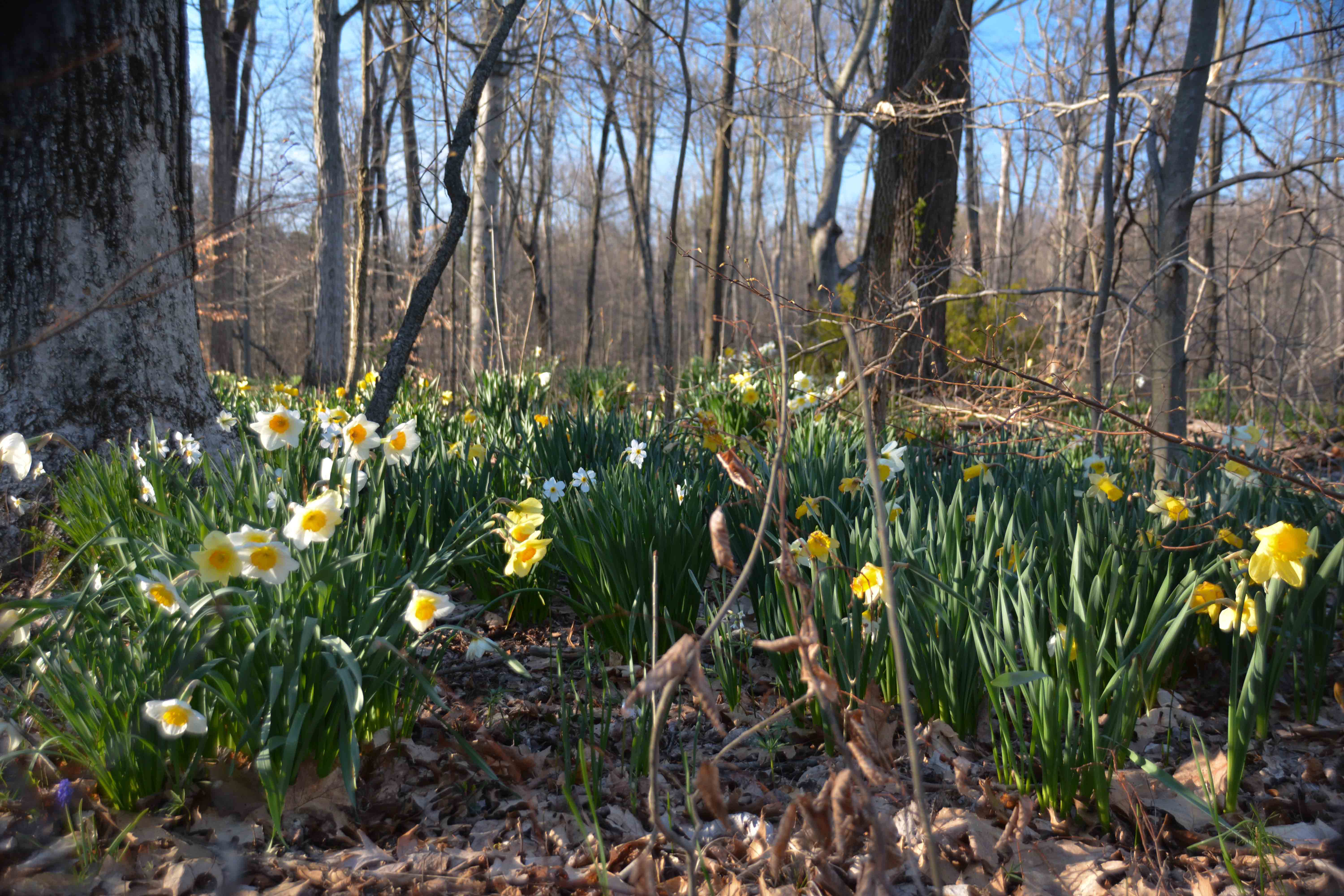
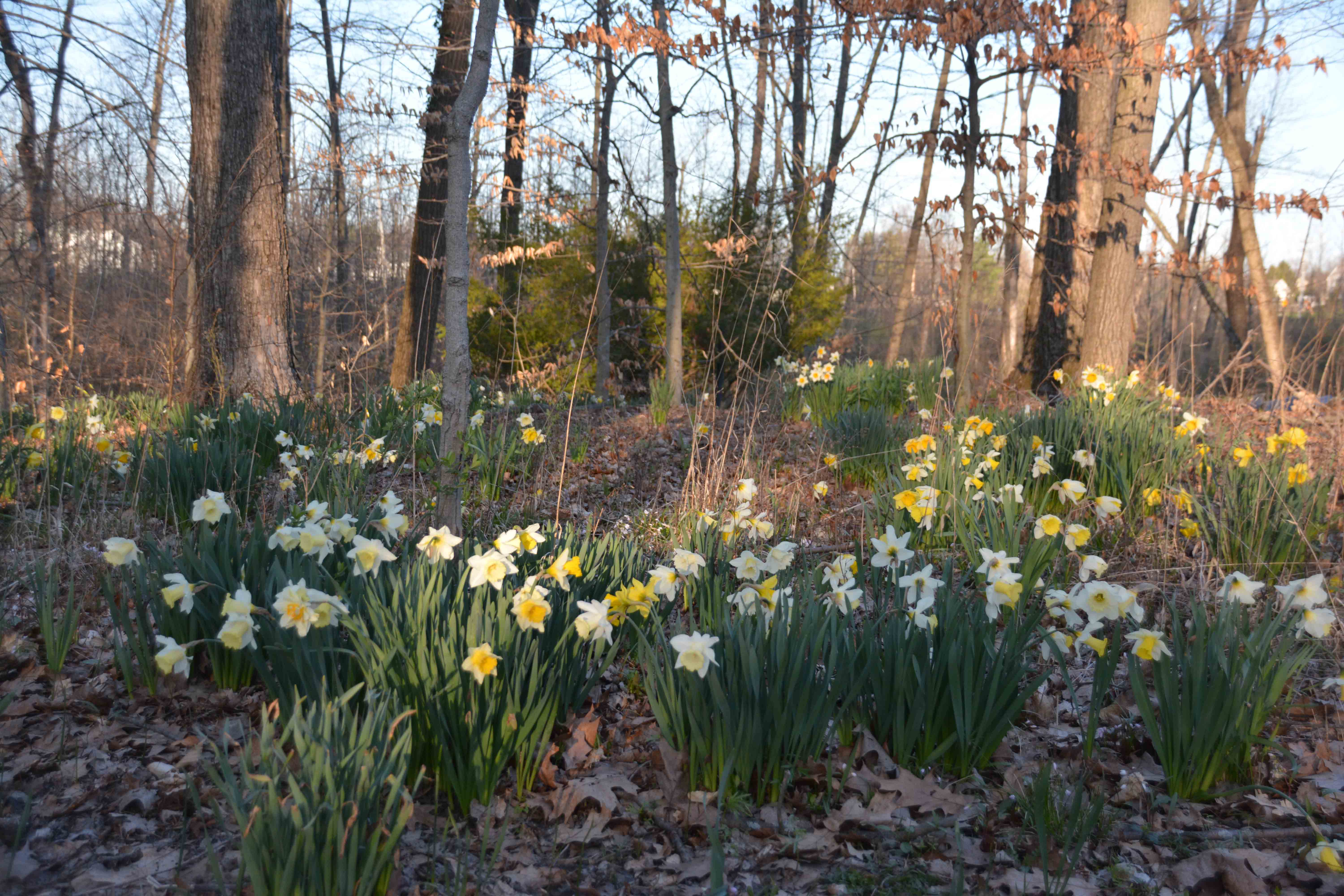
The two images above feature multiple groupings of naturalized daffodils in a woodland setting. These bulbs have been planted for 20 plus years and have spread in sporadic clumps with multiple varieties nesting together. As these daffodils foliage beings to die back, the other ground covers take over.
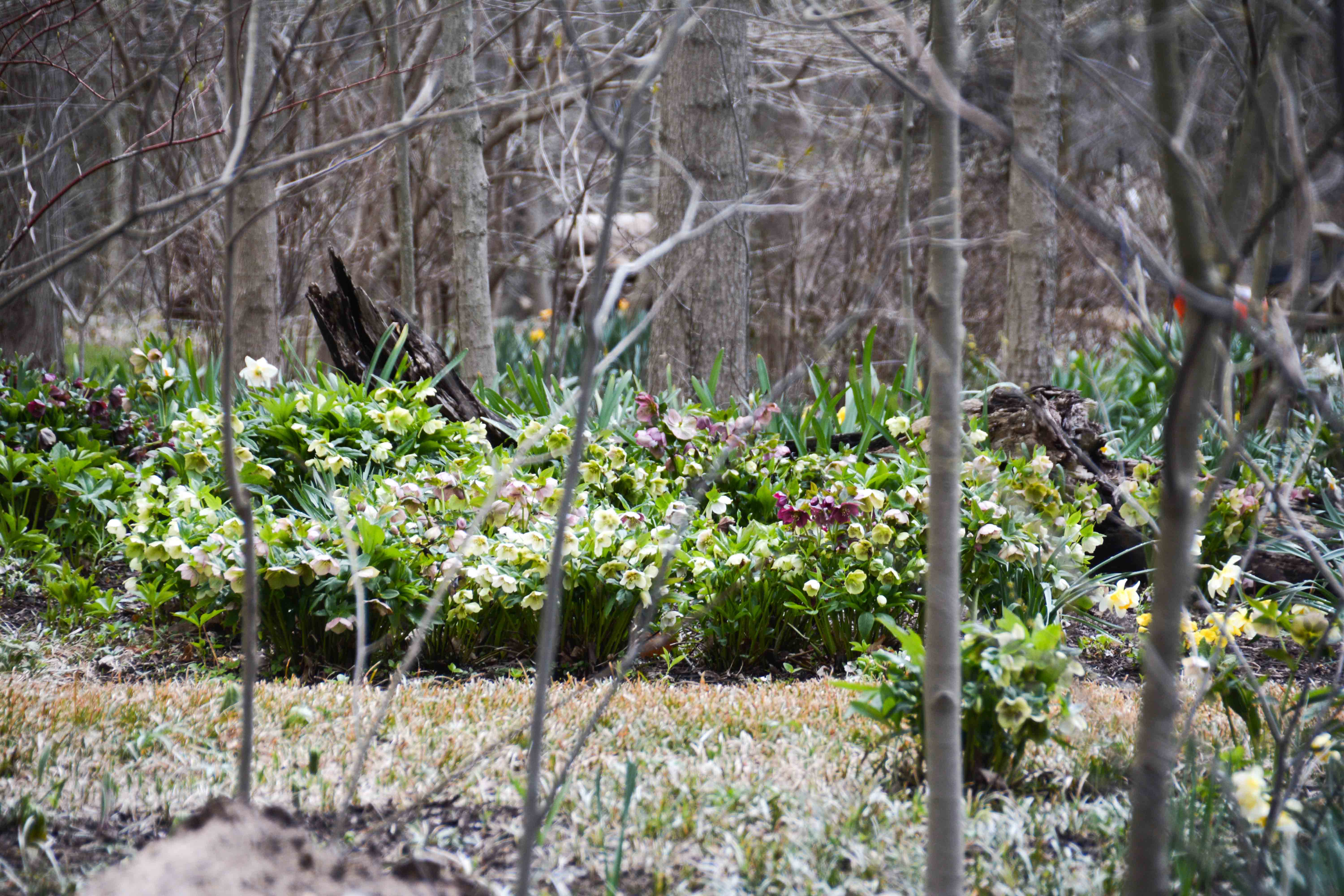
Another woodland planting showcases daffodils planted among a Royal Heritage Hellebore. The hellebore are the moody spring flowers compared to daffodils, but are perfect partners when planted together.
If you are looking for some companion planting options I prefer all hellebore and specifically Muscari aremiacum. Hellebore’s moody and perfectly drab blooms are the antithesis of the cheerful daffodil blooms and mix well went plantings are woven together in clusters. The rich blue of Muscari Aremiacum is truest complementary color to the classic yellow daffodils. Equally cheerful, with small tight clustering blooms, muscari continues the complement the taller lanker daffodils. There are other great companion plants, but these are my top two favorites.
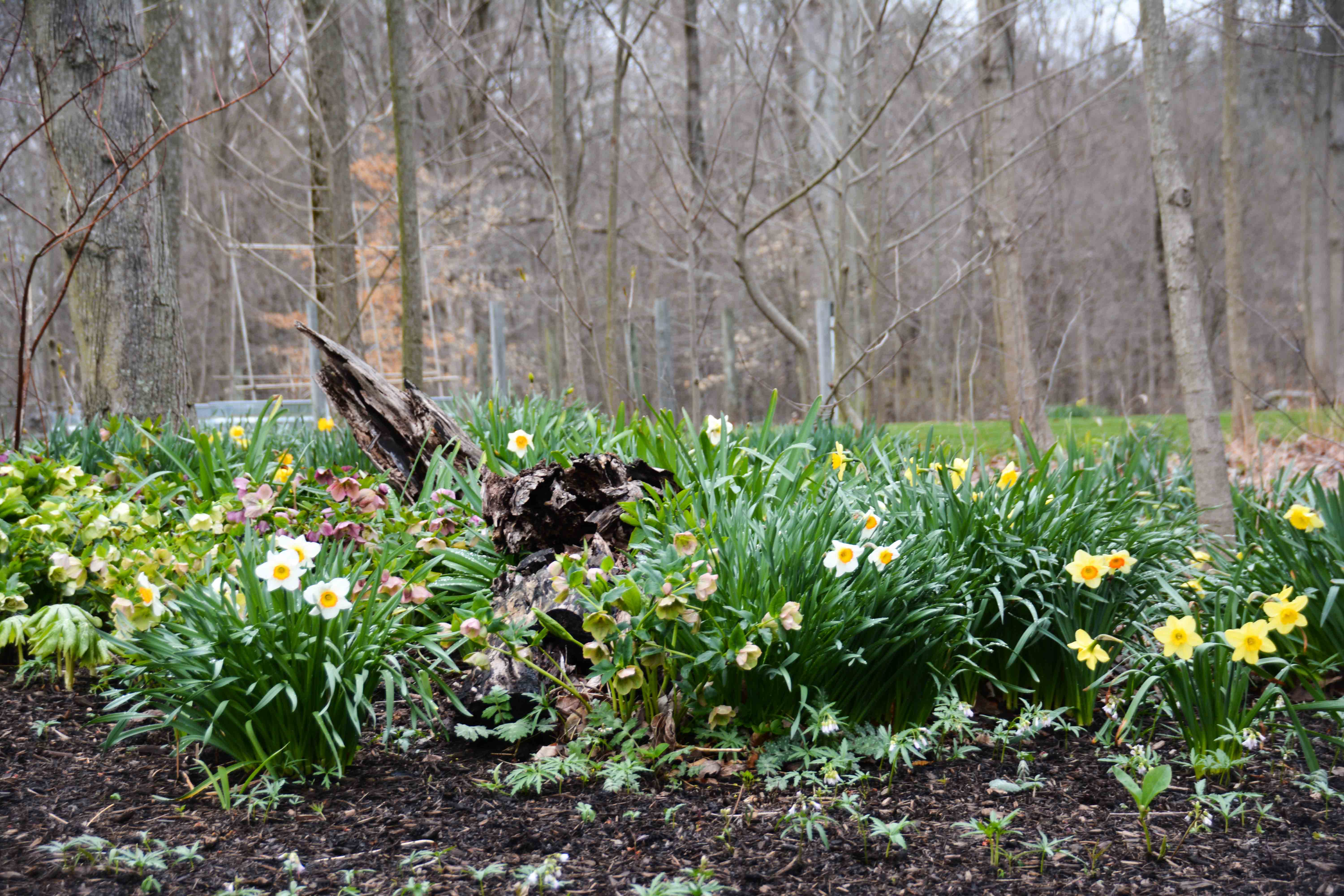
Another view of the same garden of daffodils and hellebore featured above shows how the different foliage textures and similar heights create a tapestry on the wooded floor. Again mixing varieties of each plants continues to make an unexpected discovery as each variety blooms. This is a great planting design along a pathway, where you have discovery of all the different varieties.
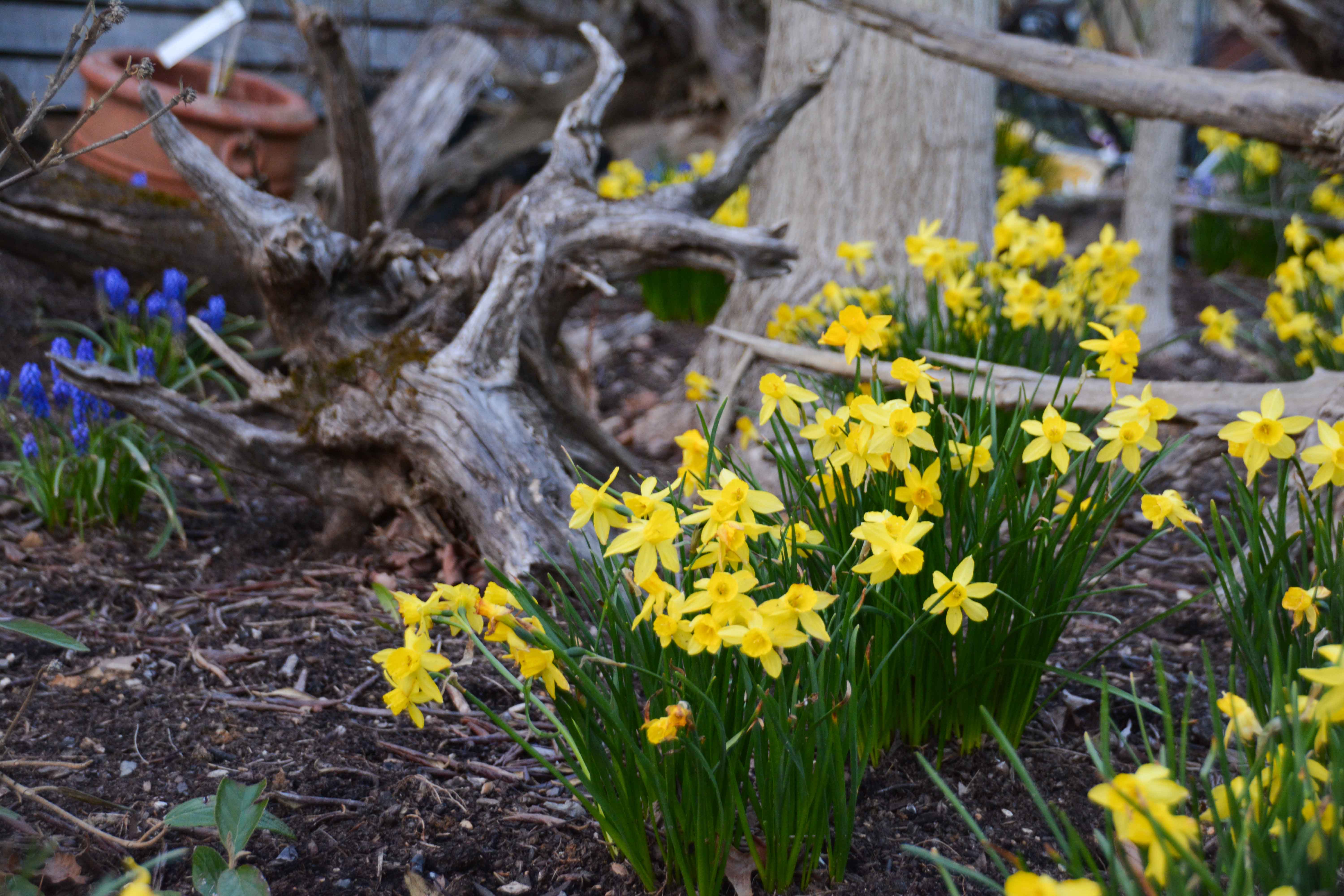
A collection of Narcissus ‘Lemon Sailboat’ planted in clumping are sharing the same area as groupings of Muscari armenicum. The complementary colors mixed with the organic spacing create an impactful spring boarder where both feel they were there all long, but actually planted last fall.
MEDIUM GARDENS: Every suburban garden across America.
If you have any foundation beds around your home, you have a great place to add daffodil bulbs. Look for planting around existing perennials to cover the foliage as it dies back. Also look to add at the edges of the beds or under trees. You can also plant further from the house along the edge of any bed. The only rule I give is planting the grouping of at least 10 bulbs to avoid the line up on soldiers down the bed. Even if you have one or two large clumps, this planting method gives the group impact and feeling of age from naturalization. You may also use the small garden option of adding containers at the front door, on the patio or inside a garden bed.
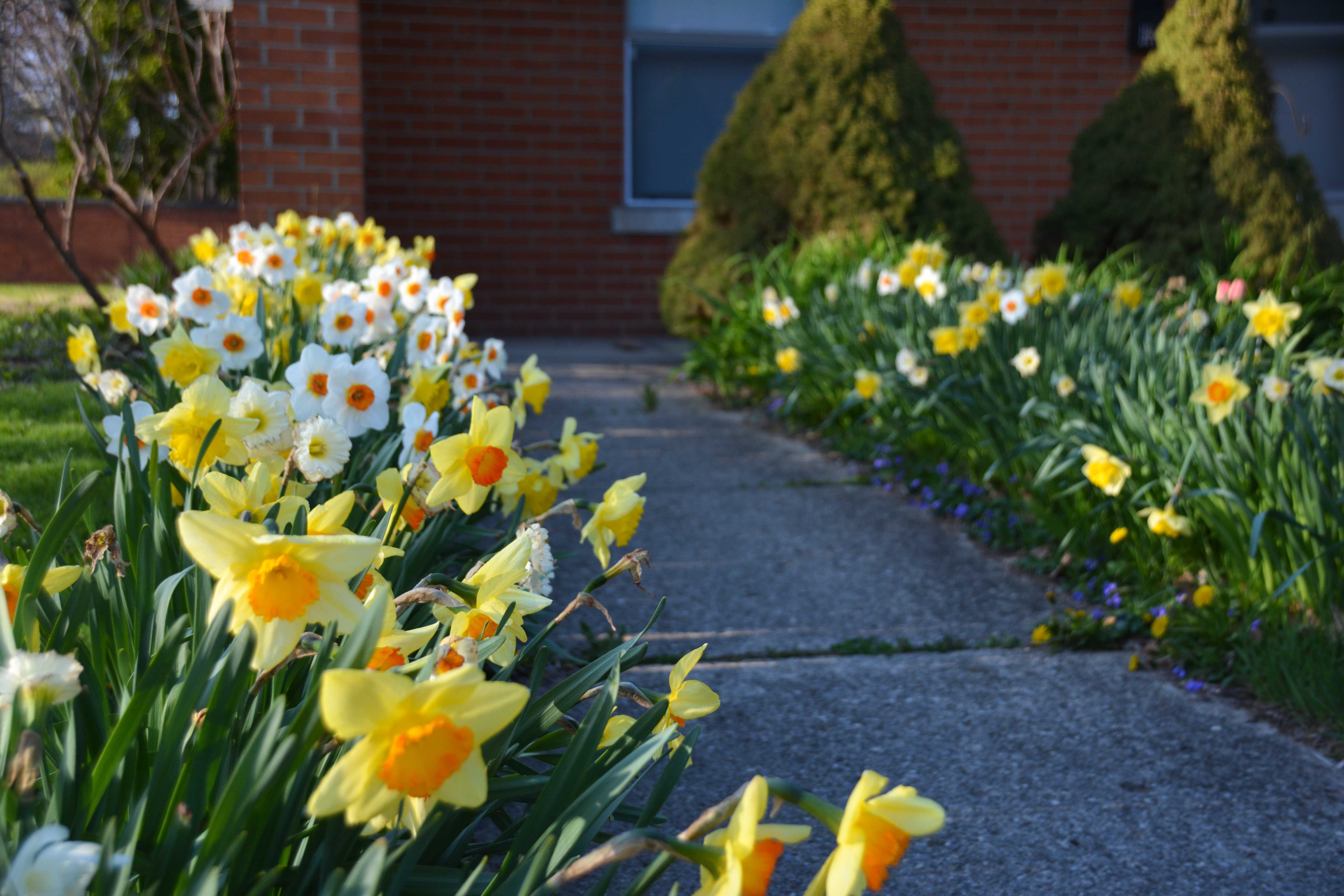
This is a planting we saw on a walk in German Village (Columbus,Ohio) where a mix of daffodils are planted down either side of a sidewalk. My guess is these have been planted for a while, and are a great example of mixing the varieties. This planting was impactful down both sides, but would also be great down just one side too.
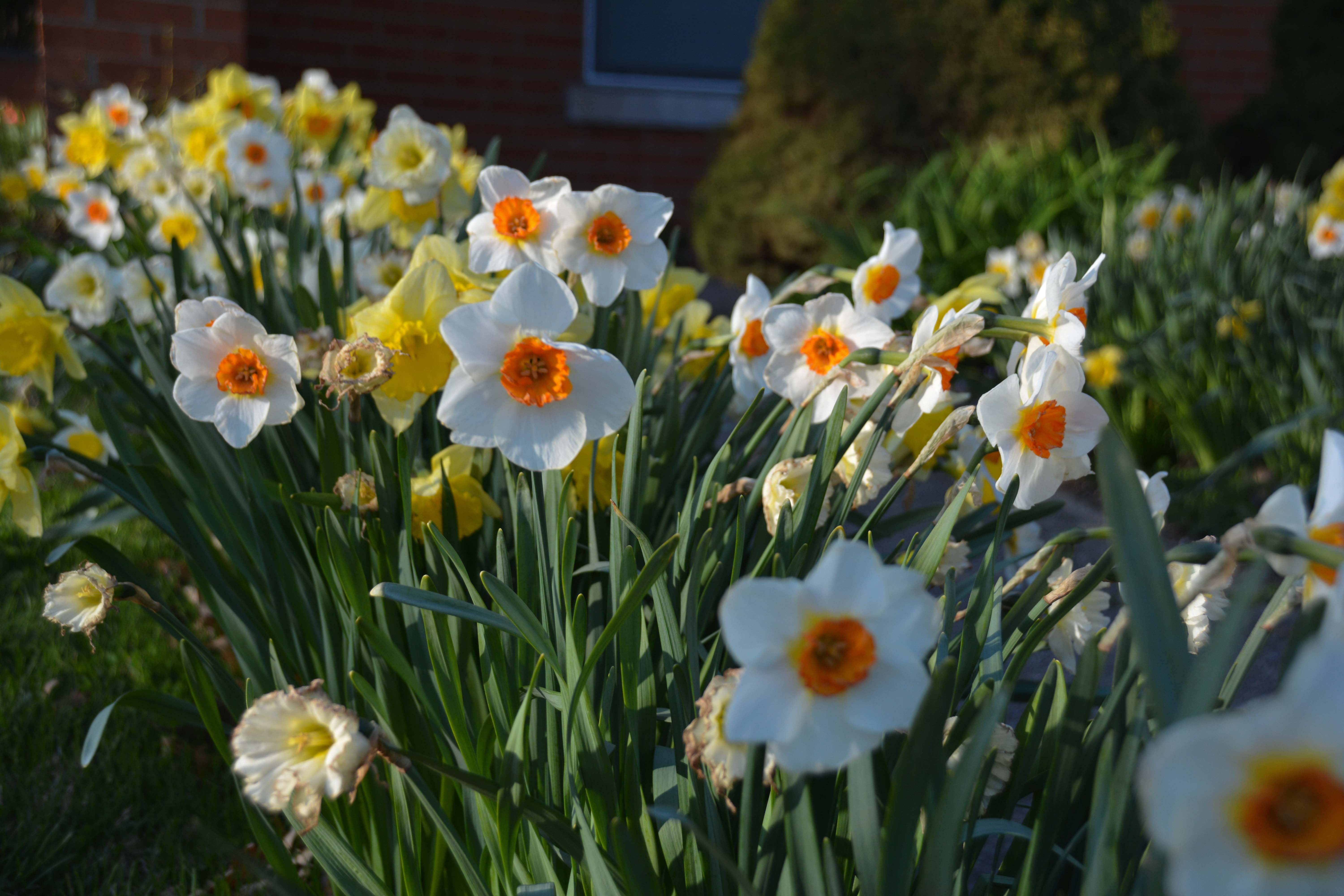
A close up of the sidewalk planting shows how the daffodil varieities are at different peak times, but the mass planting hides the varieties that are dying back.
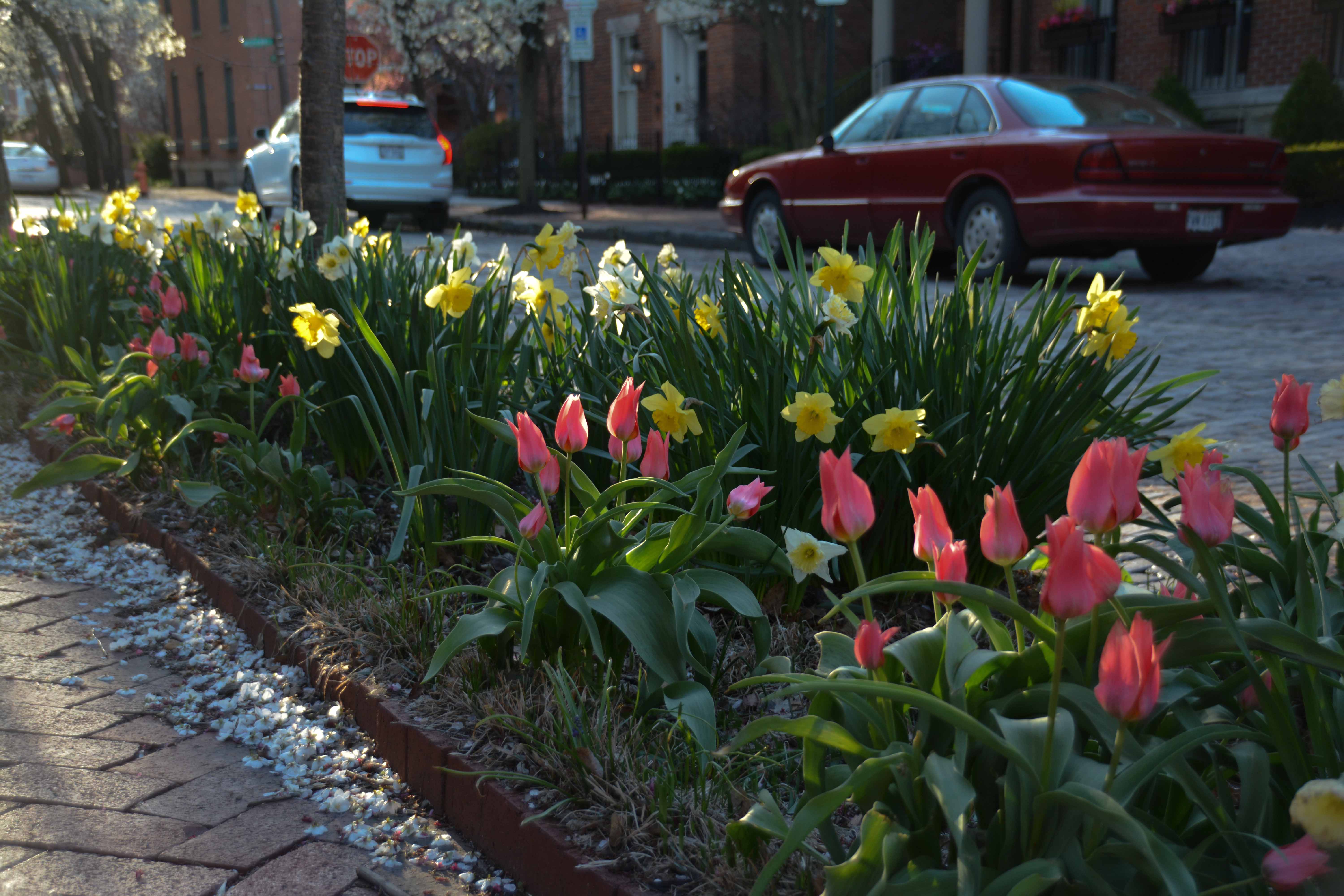
This is a planting we saw during a walk last weekend in the space between the curb and sidewalk. While I don’t love daffodils with tulips, however this planting was striking walking down the sidewalk. What you can also see in this photo is the liriope pushing new growth that will grow up to cover the foliage of the daffodils.
ALL GARDENS – PLEASE DO NOT DO THIS. There are lots of plants you can drop in single holes in a straight line, but daffodils are not one of those plants. They just look sad, which is completely against their nature. If you only have a few bulbs to plant, pick one spot. In this garden I would suggest around the mulit-stem tree or around one of the fence posts and with the plants on either side of the fencing.
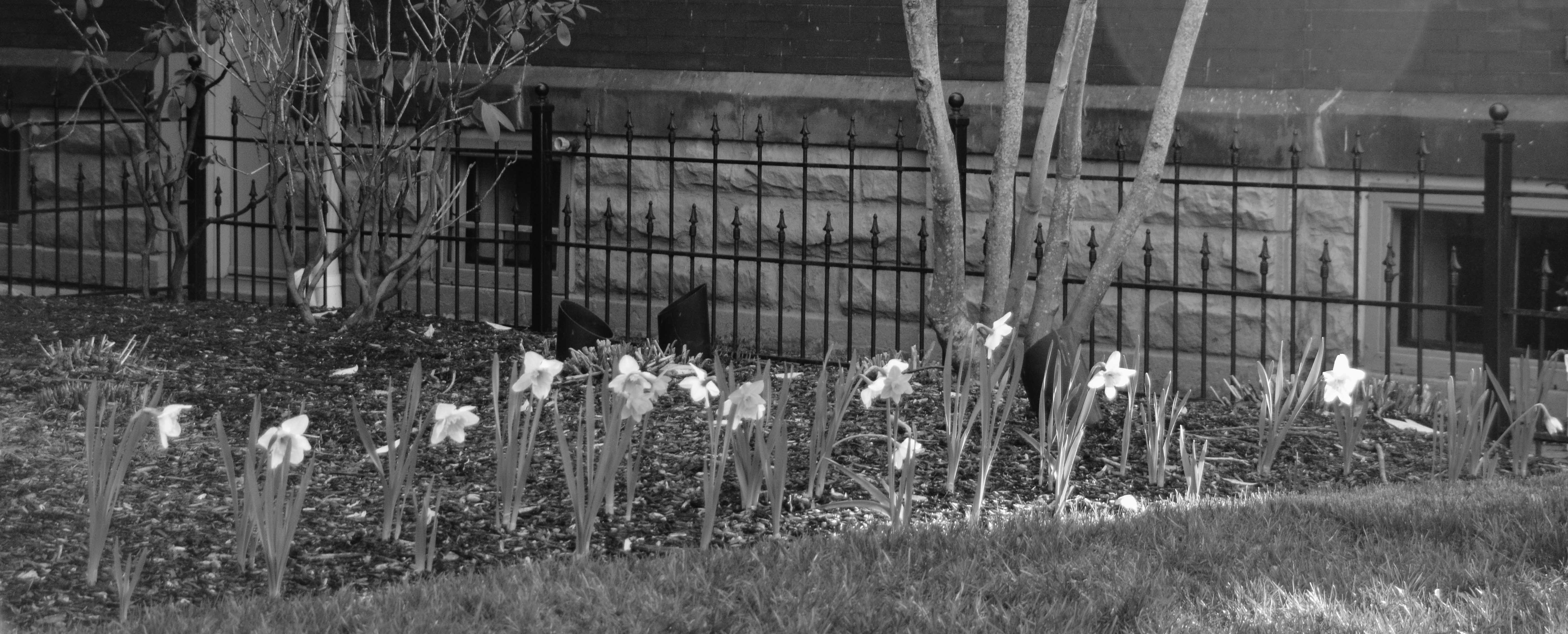
HOW TO PREPARE FOR 2019: So outside of buying pre-forced bulbs you have missed the boat this year for blooms, but are already ahead of the game for next year.
- Decided where to plant. Deciding where you want to plant the bulbs will determine the number you would need to fill the space. For a 2 x 2 foot area you will want about 20 bulbs, this goes for a container or for a natural planting.
- Select your bulbs. Even if the vendor is not currently taking orders for bulbs, you can pre-shop most sites and research the colors and bloom times you desire. Start with the unique varieties first and then if you want some more common ones you can wait for end of the season sales to enlarge your drifts. I also recommend for getting at least one early bloomer, to provide the earliest sign of spring in your garden.
- Fall Planting. When it is time for fall planting, wait to plant in late October into November here in Ohio. You want the hot days well past, and as long the ground is not frozen you can plant. This allows you to take advantage of those nicer late fall days. Add some bulb food to the holes before you place the bulbs, and keep the food on hand to feed every few years. (I like Espoma Organic Bulb-tone)
WHERE TO ORDER: Again to get great and interesting colors, look at ordering your bulbs for fall 2018 planting. If you have any container bulbs from this spring, go ahead and transplant those once you swap out the containers. Add a little bulb food to the hole and make sure to keep all the foliage in tack to die back naturally.
LONGFIELD GARDENS – Great pricing for starting your collection or building large drifts. They have tried and true varieties as well as lots of more unique ruffled petals or hues varieties. We have grown these bulbs in gallon containers over the winter and successfully transplanted into containers and also planted in perennial beds in the fall with amazing first year blooms. When I have noted a bulb variety, they came from Longfield Gardens.
BRENT & BECKY BULBS – Looking to get a little crazy with your bulbs, Brent & Becky have a wide selection of varieties to select from. I have become obsessed with green daffodils and they have a few varieties I am going to trial to see if they really have that green petal.
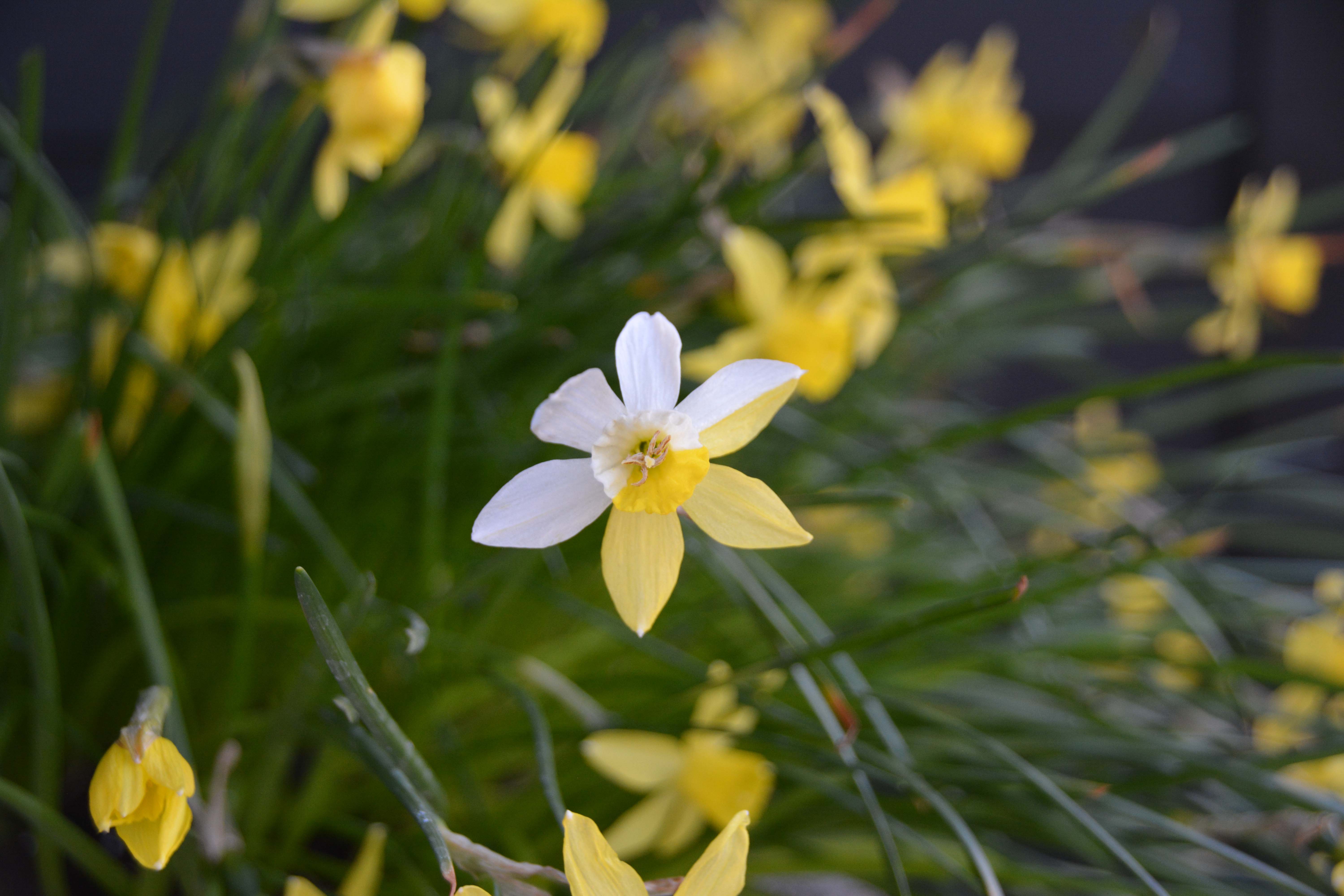
So I think that is enough proof anyone can add daffodils into their home garden. I am going to do a mass ordering of some of the green varieties to see which ones we like the best. I will leave you with the most amazing bloom from the container at our side door featuring Narcissus ‘Lemon Sailboat’. It is a 50/50 split down the center of white and yellow, so beautiful and the best happy accident to see it every time we enter and leave the house.
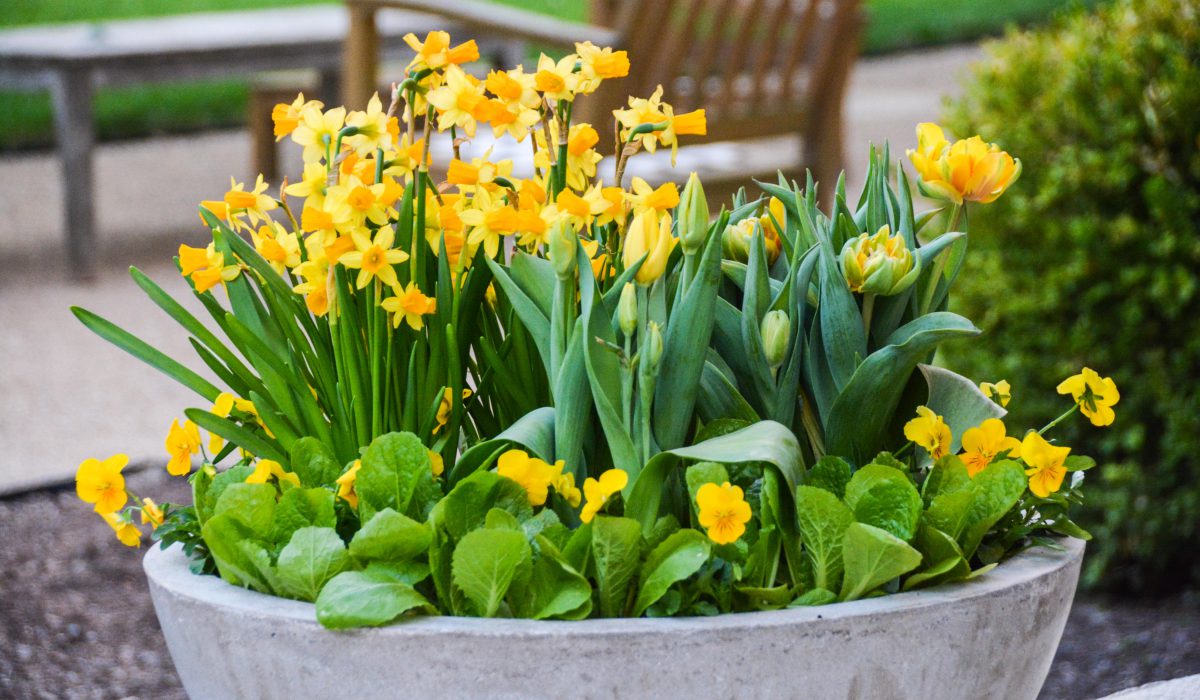
Pingback: 19 Creative Spring Porch Ideas That Say ‘Welcome Home’
Pingback: 15 Plants That Add Year-Round Color to Your Garden - Complete Gardening